
HM Prison Pentridge was an Australian prison that was first established in 1851 in Coburg, Victoria. The first prisoners arrived in 1851. The prison officially closed on 1 May 1997.

The Old Melbourne Gaol is a former jail and current museum on Russell Street, in Melbourne, Victoria, Australia. It consists of a bluestone building and courtyard, and is located next to the old City Police Watch House and City Courts buildings, and opposite the Russell Street Police Headquarters. It was first constructed starting in 1839, and during its operation as a prison between 1845 and 1924, it held and executed some of Australia's most notorious criminals, including bushranger Ned Kelly and serial killer Frederick Bailey Deeming. In total, 133 people were executed by hanging. Though it was used briefly during World War II, it formally ceased operating as a prison in 1924; with parts of the jail being incorporated into the RMIT University, and the rest becoming a museum.
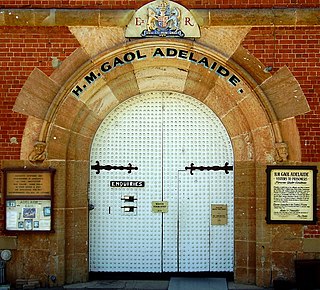
Adelaide Gaol is a former Australian prison located in the Park Lands of Adelaide, in the state of South Australia. The gaol was the first permanent one in South Australia and operated from 1841 until 1988. The Gaol is one of the two oldest buildings still standing in South Australia, the other being Government House which was built at the same time. The prison is now a museum, tourist attraction and function centre.

Yatala Labour Prison is a high-security men's prison located in the north-eastern part of the northern Adelaide suburb Northfield, South Australia. It was built in 1854 to enable prisoners to work at Dry Creek, quarrying rock for roads and construction. Originally known as The Stockade of Dry Creek or just The Stockade, it acquired its current name from a local Kaurna word relating to inundation by water, which was used for the Hundred of Yatala.

The Berrima Correctional Centre is an Australian prison, located at Berrima, New South Wales. The Centre was operational between 1839 and 2011 with a number of breaks in between, and was re-opened in September 2016. Initially established as Berrima Gaol, the facility closed in 1909 and reopened in 1949 as the Berrima Training Centre. The Centre is the oldest Australian correctional facility in operation. It was added to the New South Wales State Heritage Register on 2 April 1999.
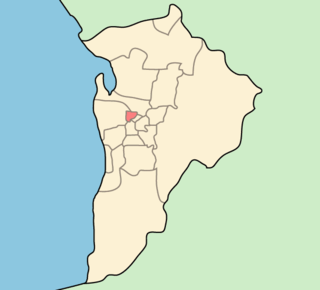
The City of Prospect is an inner urban local government area (LGA) in Adelaide, South Australia. The council seat is the unusually-large suburb of Prospect, which makes up almost two thirds of the tiny council area, which is less than 8 km2 (3.1 sq mi). Established in 1872, it is one of the oldest local government bodies in South Australia.
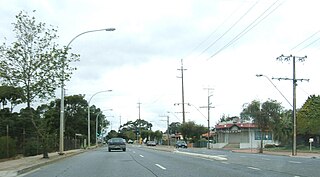
Northfield is a suburb of the greater Adelaide, South Australia area.

The City of Enfield was a local government area of South Australia from 1868 to 1996. It was known as Yatala South up until 1933, which was named for its local government area predecessor, the District Council of Yatala, and known as Enfield thereafter.

The Wentworth Gaol is a heritage-listed former gaol and school building and now museum and old wares shop located at 112 Beverley Street, Wentworth, in the Wentworth Shire, New South Wales, Australia. It was designed by James Barnet and built from 1879 to 1881 by Whitcombe Brothers, Hay. It is also known as the Old Wentworth Gaol. The property is owned by Department of Primary Industries - Western Lands Commissioner, an agency of the Government of New South Wales. The property was added to the New South Wales State Heritage Register on 21 October 2016.
The City of Port Adelaide was a local government area of South Australia centred at the port of Adelaide from 1855 to 1996.
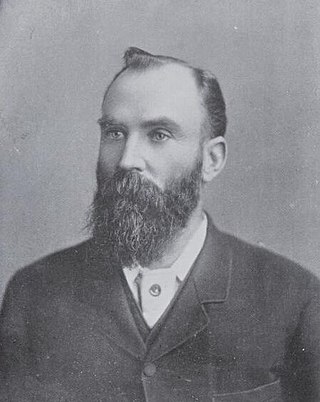
James Cowan, flour miller and investor, had been a member of the South Australian House of Assembly for the Yatala for only 2 months when he was killed in an accident at a railway crossing. Cowan was an early investor in BHP. The property associated with Erindale, Cowan's residence at Burnside, was sub-divided after his death into a new suburb which was also named Erindale.

There have been various riots at Fremantle Prison, and other disturbances, over the years that it was operational. Fremantle Prison was built using convict labour during the 1850s, based on the design of Pentonville Gaol, and was used as the maximum security prison for male offenders in Western Australia. While there were some reforms following Royal Commissions in 1898−99 and 1911, significant changes to the operation of Fremantle Prison did not begin until the 1960s. One of the earliest incidents was in 1854, while major riots which occurred in 1968 and 1988 resulted in damage to the prison.
The District Council of Glanville was a local government area in South Australia from 1864 to 1888.
The Wilmington railway line was a railway line on the South Australian Railways network. It opened from Gladstone to Laura on 2 June 1884. It was extended from Laura to Booleroo Centre on 13 April 1910, and to Wilmington on 20 July 1915.
The District Council of Gladstone was a local government area in South Australia. It was proclaimed on 10 August 1876 as the District Council of Yangya, named for the cadastral Hundred of Yangya, but was renamed Gladstone after its main town on 14 August 1879. Gladstone had been built as a private township very close to the hundred boundary, and the adjacent government township of Booyoolie, built not long after, was in the adjacent Hundred of Booyoolie, and formed as the separate District Council of Booyoolie, dividing the twin towns into two separate municipalities based on their respective hundreds. It gained the Booyoolie township from that council in 1879, and acquired the remainder of what had been the southern portion of the Booyoolie council on 12 August 1880. It then gained the remainder of the Hundred of Yangya under the District Councils Act 1887.
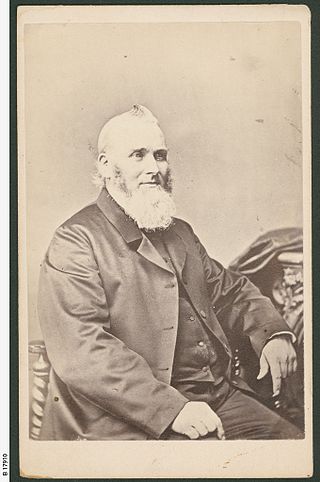
Rev. James Maughan was a Methodist minister in Adelaide, South Australia. His name was commemorated in the Maughan Church, Franklin Street, which has since been demolished.

Redruth Gaol is a historic former prison in Burra, South Australia, now operating as a museum. It was the first prison in South Australia to be built outside of the state capital, Adelaide.
Thomas Francis Hyland was a businessman of Victoria, Australia, instrumental in turning Penfolds Wines from a cottage industry to an Australian icon.
Theodore Emil Argles was an Australian journalist described as "amazingly clever and desperately erratic", who wrote under a variety of names, including "Pasquin", "Harold Grey" and "The Pilgrim".














